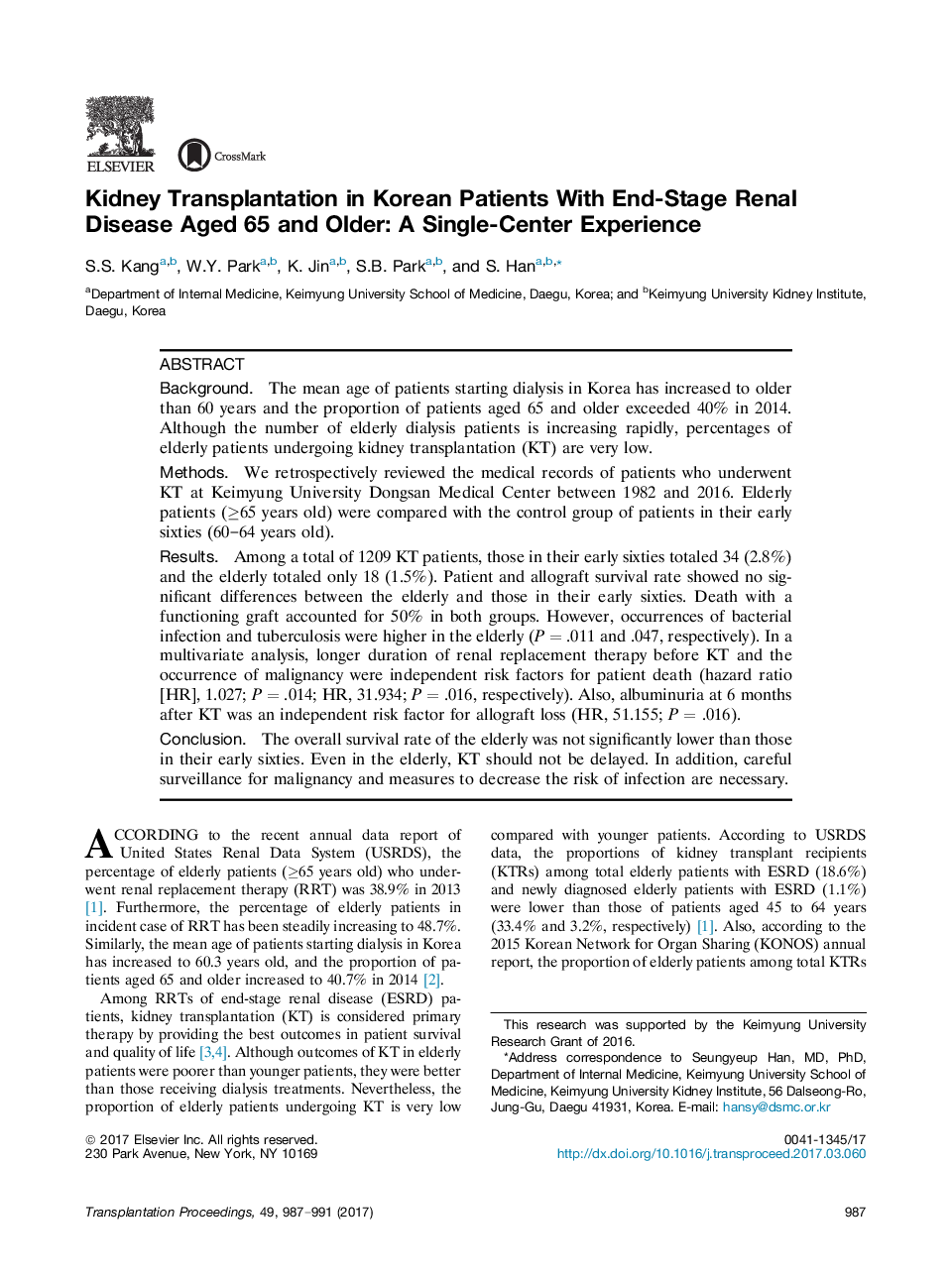| Article ID | Journal | Published Year | Pages | File Type |
|---|---|---|---|---|
| 5728784 | Transplantation Proceedings | 2017 | 5 Pages |
BackgroundThe mean age of patients starting dialysis in Korea has increased to older than 60 years and the proportion of patients aged 65 and older exceeded 40% in 2014. Although the number of elderly dialysis patients is increasing rapidly, percentages of elderly patients undergoing kidney transplantation (KT) are very low.MethodsWe retrospectively reviewed the medical records of patients who underwent KT at Keimyung University Dongsan Medical Center between 1982 and 2016. Elderly patients (â¥65 years old) were compared with the control group of patients in their early sixties (60-64 years old).ResultsAmong a total of 1209 KT patients, those in their early sixties totaled 34 (2.8%) and the elderly totaled only 18 (1.5%). Patient and allograft survival rate showed no significant differences between the elderly and those in their early sixties. Death with a functioning graft accounted for 50% in both groups. However, occurrences of bacterial infection and tuberculosis were higher in the elderly (P = .011 and .047, respectively). In a multivariate analysis, longer duration of renal replacement therapy before KT and the occurrence of malignancy were independent risk factors for patient death (hazard ratio [HR], 1.027; P = .014; HR, 31.934; P = .016, respectively). Also, albuminuria at 6 months after KT was an independent risk factor for allograft loss (HR, 51.155; P = .016).ConclusionThe overall survival rate of the elderly was not significantly lower than those in their early sixties. Even in the elderly, KT should not be delayed. In addition, careful surveillance for malignancy and measures to decrease the risk of infection are necessary.
